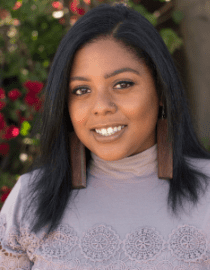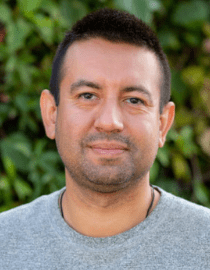By Sarah Weld for Berkeley Law’s Transcript Magazine
Last June, Oakland’s school board voted to disband its $6 million school police force, believed to be the country’s first district to do so. It committed to redirecting the money to trained staff like counselors and mentors to better support all students, but especially Black students, who studies show are much more likely to be arrested and disciplined by police of all kinds.
Eliminating school police in Oakland — Alameda County’s only district with its own force — culminates a 10-year effort by Oakland’s Black Organizing Project, made up of parents, students, and community members across the Bay Area.
Behind the scenes, the East Bay Community Law Center’s Education Advocacy Clinic, along with many other partners and allies, provided legal counsel for everything from public records requests to legal talking points. Known as movement lawyering, this approach focuses on taking direction from community members and offering legal guidance where needed.

“The clinic has really been a strategic partner,” says Jasmine Williams, the project’s communications director. “They don’t come in as the experts, they come in honoring the expertise of members. It matters how you come into a community organization, especially a Black organization, and they understand that.”
“Yes, litigation is something we can use, but we also have other tools that are often more effective,” says Oscar Lopez, the clinic’s interim director. “We look at all the tools available and make sure the voices of the people who are directly impacted are the ones being heard. An emphasis on litigation creates the impression that lawyers are the heroes of social justice without acknowledging all the necessary grassroots organizing work in the background. Our role is to train law students to support all the great racial justice work going on everywhere.”
Pattern of police violence
The project’s campaign to chip away at the school-to-prison pipeline — the process by which a disproportionate number of Black youth are pushed into the prison system through increasingly harsh school disciplinary policies — and convince the school board to cut ties with the district police began in 2011.
The movement began after 20-year-old Raheim Brown was killed by a district police officer near Oakland’s Skyline High School. Brown’s murder led community members to more broadly examine police violence towards young people in Oakland.
In a 2013 report, From Report Card to Criminal Record, the Black Organizing Project found that in the previous two years, 73% of the school police department’s 85 arrests were of Black youth, who made up only 30% of the district’s students. The school police did not report arresting a single white student.
The report also found that over a seven-year period, Black youth accounted for more than 73% of all annual juvenile arrests by the Oakland Police Department, even though they made up just 29% of the Oakland youth population.
In addition, Black youth were referred to the Alameda County Probation Department at more than two-and-a-half times their population percentage, meaning they are six times more likely to be sent to probation than Hispanic youth, and 23 times more likely than white youth.
“School police don’t actually make schools safer at all,” Lopez says. “Before, a young person would have been referred to the principal’s office and now it’s the police, which has particularly dire consequences for Black students.”
Williams agrees: “It’s a culture that invests more in policing than the people.”
Rooted in community
Movement lawyering directly echoes the community-based philosophy of the project’s campaign strategy, which prioritizes hearing from as many different groups as possible — students, parents, teachers, school staff, and neighbors — before approaching the school board.
“We were able to build solidarity with groups that weren’t usually in favor of abolition,” says Williams, explaining that gaining the teachers unions’ support was a critical step for the campaign to eliminate school police. “This was a monumental turn in our campaign. We knew we had to organize teachers to stop calling police on students to maintain long-term change.”
While the project worked to organize the community, clinic students and faculty provided vital support for the campaign, carefully maintaining a background role.

“We really take the lead from the community, like if they want us to file a civil rights complaint or analyze data,” says Lopez. “We center the directly impacted community members and find out how we can support their work.”
When the pandemic hit last spring, Williams says project staff had to adjust to the challenges of online engagement as much of their work stems from face-to-face contact.
But with the national protests erupting in reaction to the killing of George Floyd in May 2020, “we had an outcry of support and a new mainstream awareness of policing,” she says. “Our work tripled. People wanted to see change, realizing that even in the middle of a pandemic there was a lack of compassion to see Black people as humans.”
Moving ahead
Now that the school district police have left Oakland schools, the Black Organizing project continues to lead the work alongside the community in what Williams calls the “transformation stage.”
“They are really digging into that question,” Lopez says. “What are teachers afraid of? What alternatives can they use? Who do you call when there are physical altercations?”
Plans include staff training on de-escalation, crisis intervention, unconscious or implicit bias and anti-racism; and shifting the roles of school security officers, who were never armed, into cultural and climate ambassadors rather than strictly rule enforcers.
Other ideas include redirecting school police funding to pay for school-based case managers, social workers, psychologists, restorative justice practitioners, academic mentors and advisors, or other mental or behavioral health professionals.
“This shows the power of Black organizing. This small grassroots organization had a vision 10 years ago and stuck to it and didn’t give up. Centering the most impacted community members is the solution,” Williams says. “This is a testament to how community organizing really works.”
Read this article in Berkeley Law’s Transcript magazine here.